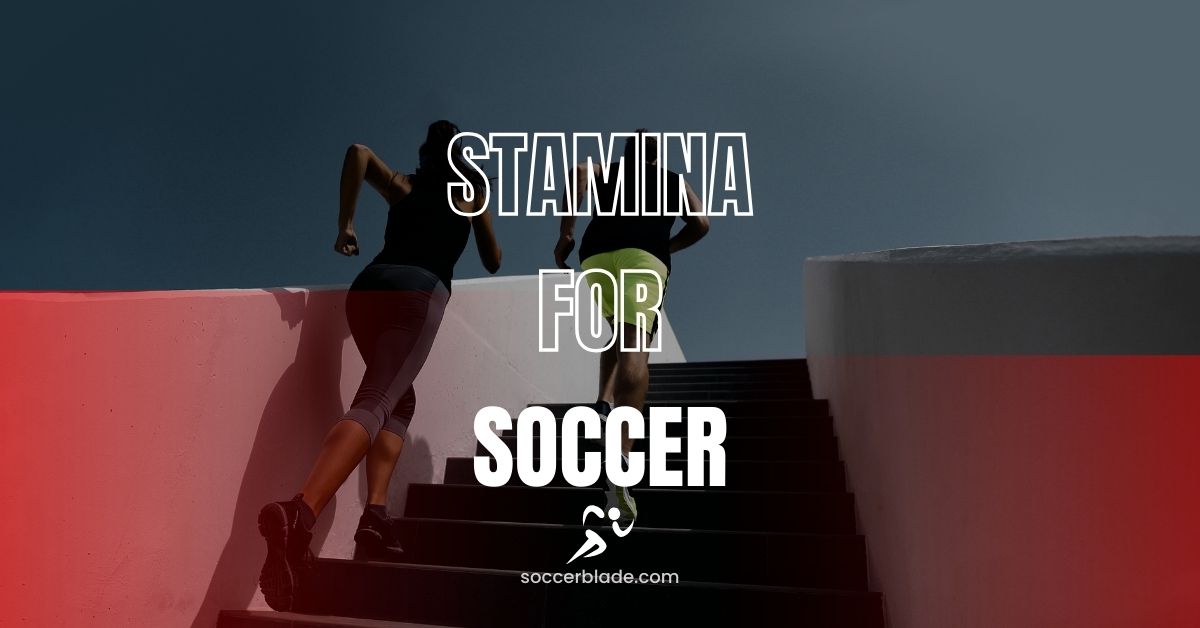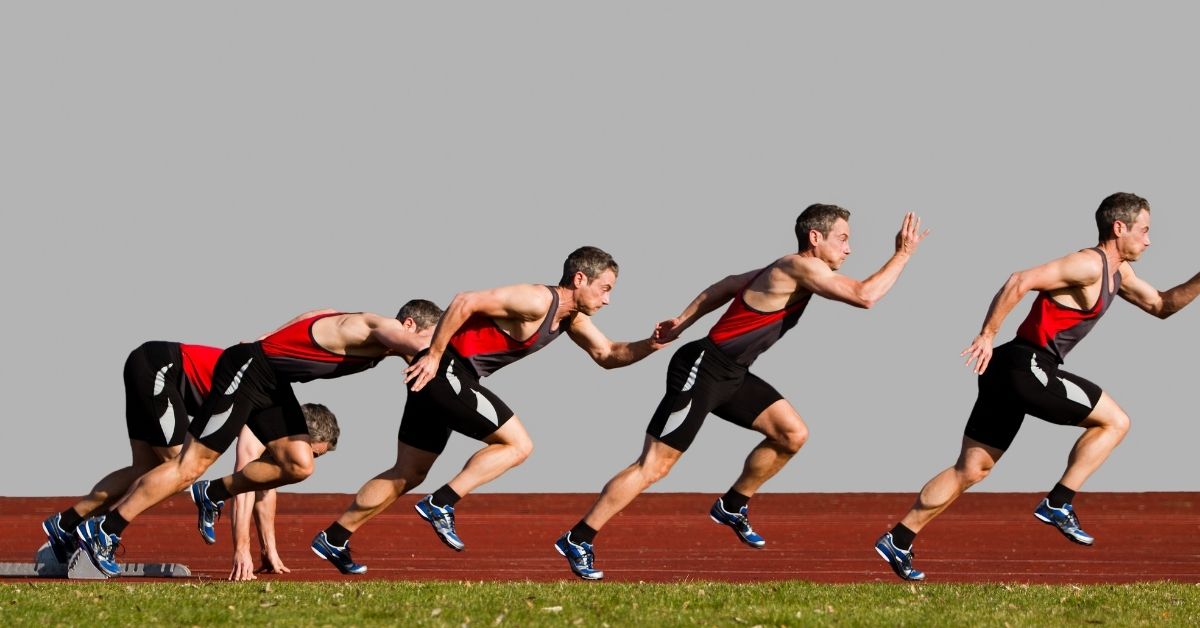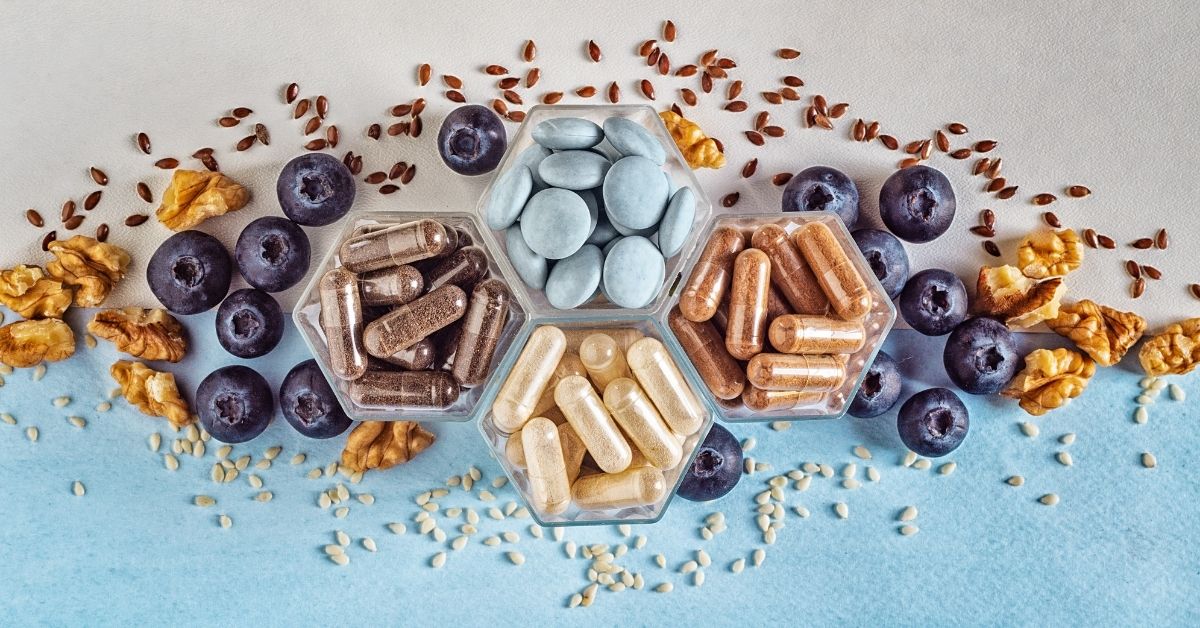Share the post "Improving Stamina for Soccer: Boost Your Game with These Power-Packed Hacks"
Soccer stamina is as important as ball abilities. Targeted exercises and training regimens can help you avoid losing in the last minutes and beat your opponents because soccer requires constant activity and endurance. Stamina in soccer improves positioning, plays, and field presence during the contest.
Understanding how the game affects your body is the first step to stamina optimization. Strength training improves fitness and prevents injuries, while tactical cardiovascular activities increase endurance. High-intensity interval training (HIIT) can imitate soccer’s stop-and-go dynamic, boosting your recovery and playability. Finding the correct workout mix that boosts stamina and matches soccer’s roughness is crucial.
Key Takeaways
- Increasing stamina needs cardiovascular, strength, and HIIT training.
- Soccer-specific exercises improve game endurance and performance.
- Customized diet, hydration, and recuperation boost stamina.

Fundamentals of Soccer Stamina
Stamina in soccer is the linchpin to our performance on the field. Let’s explore how our body’s energy systems contribute to our play, understand the core conditioning principles, and set achievable fitness goals to elevate our game.
Understanding Energy Systems in Soccer
In soccer, we rely on a few different energy systems to power through the game. First, there’s the aerobic system, which uses oxygen to fuel our muscles during continuous, steady-state play. Then, when we’re sprinting or performing high-intensity actions, we tap into our anaerobic systems.
These include both the anaerobic glycolysis system, for short, intense bursts, and the phosphagen system for quick, explosive movements like a jump or a quick dash to the ball. Recognizing which system we’re using during various parts of the game can help us tailor our training effectively.
- Aerobic System: Used for sustained, moderate activity.
- Anaerobic Glycolysis: Powers short, high-intensity bouts.
- Phosphagen System: Fuels the most explosive actions.
Principles of Sports Conditioning
Sports conditioning for soccer is not just about running – it’s a mix of cardiovascular endurance, muscular strength, and flexibility training. By incorporating high-intensity interval training (HIIT) and plyometric exercises, we can maximize our cardiovascular fitness and muscular endurance in a way that mimics the demands of a real match.
Additionally, integrating strength training and agility drills will prepare our muscles for the challenges of the game and help prevent injuries.
Setting Fitness Goals for Soccer Players
To improve our stamina for soccer, we must set specific, measurable, achievable, relevant, and time-bound (SMART) fitness goals. Maybe we aim to improve our VO2max to better our aerobic capacity or increase the number of sprints we can make in a game before fatigue sets in.
We can use tools like fitness trackers or work with a coach to measure our current performance and track improvements over time. With clear goals, we’ll have targeted outcomes to strive for in our stamina-building journey.
- VO2max Goals: Aim to improve aerobic capacity.
- Sprint Targets: Increase the number and intensity of sprints during a game.

Essential Soccer Drills
For peak performance on the soccer field, we’re diving into drills that focus on enhancing every aspect of our stamina. Let’s lace up and get ready to push our limits.
Endurance-Enhancing Ball Drills
We must combine ball control with stamina. To hit two birds with one stone, we set up a fitness circuit using cones. Place these cones around the penalty area and the center circle. For an engaging drill, we dribble the ball rapidly around the cones, mimicking game scenarios to work on our touch under pressure while boosting our endurance.
High-Intensity Interval Training (HIIT) for Soccer
Our hearts pump with excitement as we incorporate HIIT into our soccer training. We alternate between bursts of high-intensity activities, like sprinting, and recovery periods. This simulates the stop-and-go nature of a soccer match and skyrockets our stamina. We know that activities such as running, swimming, and cycling effectively improve our cardiovascular fitness.
Agility and Speed Workouts
Quick turns and explosive sprints define soccer. We mix agility ladders, cone drills, and short sprints to not only boost speed but also to enhance our ability to change directions swiftly. Training like this ensures we’re as dynamic on the field as the game itself.
Strength Training to Support Stamina
Also, we don’t ignore our muscles. Strong legs and core are essential for lasting power in soccer. We use bodyweight exercises, like squats and lunges, and add resistance training to our routine to build the muscle endurance that keeps us going strong until the final whistle.

Nutrition and Hydration Strategies
Optimal performance on the soccer field hinges on proper nutrition and hydration. As soccer players, we must focus on fueling our bodies with the right nutrients and maintaining hydration to enhance our stamina and play at our peak.
Balanced Diet for Soccer Players
Aim for a diet that includes a wide variety of nutrients: carbohydrates, proteins, healthy fats, vitamins, and minerals. Research suggests that consuming a high-carbohydrate diet from sources like whole grains and vegetables is crucial. These carbs are our primary fuel source, providing the energy we need to maintain high performance levels.
- Carbohydrates: 7-10 g/kg body mass (BM) daily, up to 12 g/kg BM on match or heavy training days for sustained energy.
- Proteins: Essential for muscle repair and growth; lean meats, legumes, and dairy are excellent choices.
- Fats: Don’t shy away from healthy fats found in avocados, nuts, and olive oil, as they provide long-lasting energy.
- Vitamins and Minerals: A varied diet will usually provide ample vitamins and minerals, but focusing on iron-rich and calcium-rich foods will support muscle function and bone health.
Hydration Tactics During Training and Matches
Hydration is paramount for maintaining stamina. To avoid dehydration, we follow good hydration practices that include:
- Starting exercise well-hydrated (euhydration).
- Limiting fluid loss during exercise.
- Rehydrating after exercise, aiming to replace any fluid losses before the next training session or match.
It’s not just about water; replacing electrolytes lost through sweat is important, so incorporating an electrolyte solution, especially in hot conditions or during prolonged activity, can be beneficial.
Supplements to Boost Performance
Supplements can serve as an additional tool to enhance our soccer performance. While food should always be our foundational source of nutrients, certain supplements might offer benefits:
- Creatine: May improve short bursts of high-intensity exercise performance.
- Beta-alanine: Can help buffer muscle acid during intense exercise.
- Branched-chain amino acids (BCAAs): May aid in recovery and reduce muscle soreness after strenuous training.
It’s imperative we’re mindful of what we’re consuming, ensuring compliance with sporting regulations and seeking advice from nutrition professionals.

Recovery Techniques
Proper recovery is as pivotal to improving our stamina in soccer as the training itself. Let’s explore how we ensure our bodies bounce back stronger and ready for the next game or training session.
Importance of Sleep for Recovery
Quality sleep is the foundation of our recovery process. It’s during deep sleep that our muscles repair and our energy stores replenish. Aim for 7-9 hours of uninterrupted sleep, creating an environment conducive to rest by minimizing light and noise. The more we push ourselves in training, the more sleep we need.
Active Recovery Sessions
After an intense match or practice, we engage in active recovery sessions. These can involve activities such as slow jogging, swimming, or cycling at a low intensity. The goal is to increase blood flow to our muscles without overstressing them, which aids in the removal of lactic acid and reduces muscle stiffness.
Injury Prevention and Care
Preventing injuries is vital for consistent training and improvement. We focus on maintaining flexibility and strength, especially in the muscles and joints we use most during soccer. Regular stretching, warm-up exercises, and using techniques like foam rolling for muscle tension help us stay in top form and avoid setbacks from injuries.
When injuries do happen, we prioritize proper care and consult sports health professionals to ensure a safe and effective return to play.

Monitoring Progress and Adjusting Training
For optimal stamina in soccer, understand the significance of monitoring progress and adjusting training. It’s how we ensure our workouts are in sync with our evolving fitness levels and soccer demands.
Tracking Fitness Levels Over Time
Our primary objective is to reliably track our fitness levels. That’s where consistent benchmarking comes into play. Initially, we assess our baseline stamina through various tests, such as the beep test for cardiovascular endurance or time trials for speed. We record these results meticulously. By re-evaluating our performance bi-weekly or monthly, we gain valuable insights into our improvement curve.
Itemized changes could look something like this:
- Week 1: Completed 6 levels in the beep test.
- Week 4: Improved to 8 levels.
- Week 8: Progressed to 10 levels, showing a clear improvement in cardiovascular endurance.
Adapting Workouts to Individual Needs
Our bodies are unique, and so too should be our training plans. As we progress, it’s vital to tailor each session to reflect our current fitness capabilities and target positions. For defense-oriented players, focus might shift towards short, intense bursts of speed and power, while midfielders may concentrate on longer, sustained efforts to mirror in-game demands.
Adaptations could be made as follows:
- Increased intensity: For those who have progressed well, amplifying the difficulty of our drills.
- Altered focus: Identifying the need to work on agility rather than just raw stamina.
- Recovery period adjustments: Decreasing rest times as our bodies adapt to the strain.
Using Technology to Enhance Training Outcomes
Embracing technology allows us to make informed decisions about our training regimen. GPS-enabled wearables can track not just our runs, but also our acceleration, deceleration, and overall load during practice sessions. By syncing this data to soccer-specific endurance tracking platforms, we leverage key metrics to refine our training further for peak performance on the field.
Examples of technology use could include:
- Wearable devices: Tracking sprints, distance covered, and exertion levels during training.
- Mobile apps: Analyzing data post-training to identify trends and areas for improvement.
- Video Analysis: Reviewing recordings of training and matches to assess movement efficiency and on-field decisions.
Share the post "Improving Stamina for Soccer: Boost Your Game with These Power-Packed Hacks"
Joel is a seasoned soccer journalist and analyst with many years of experience in the field. Joel specializes in game analysis, player profiles, transfer news, and has a keen eye for the tactical nuances of the game. He played at various levels in the game and coached teams - he is happy to share his insight with you.



